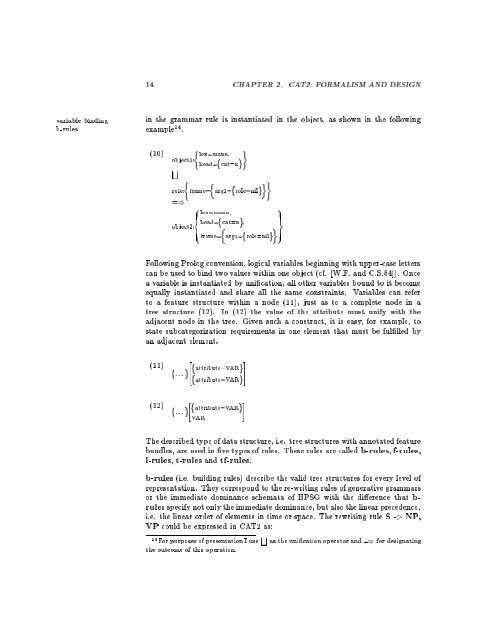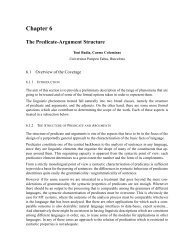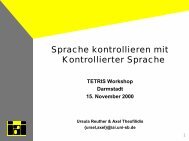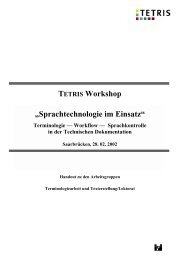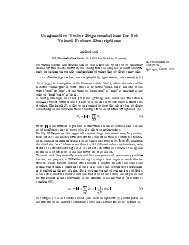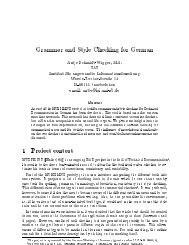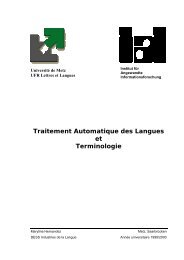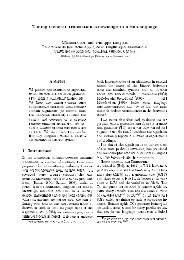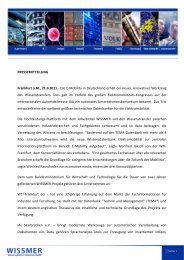Linguistic Modeling for Multilingual Machine Translation
Linguistic Modeling for Multilingual Machine Translation
Linguistic Modeling for Multilingual Machine Translation
Create successful ePaper yourself
Turn your PDF publications into a flip-book with our unique Google optimized e-Paper software.
14 CHAPTER 2. CAT2: FORMALISM AND DESIGN<br />
variable binding<br />
b-rules<br />
in the grammar rule is instantiated in the object, as shown in the following<br />
example 14 .<br />
(10)<br />
<br />
lex=mann,<br />
object1: <br />
head= cat=n<br />
F<br />
n o <br />
rule: frame= arg1= role=nil<br />
=)<br />
8<br />
9<br />
lex=mann,<br />
><<br />
>=<br />
head=<br />
cat=n ,<br />
object2: n o<br />
>: frame= arg1= role=nil<br />
><br />
Following Prolog convention, logical variables beginning with upper-case letters<br />
can be used to bind twovalues within one object (cf. [W.F. and C.S.84]). Once<br />
avariable is instantiated by unication, all other variables bound to it become<br />
equally instantiated and share all the same constraints. Variables can refer<br />
to a feature structure within a node (11), just as to a complete node in a<br />
tree structure (12). In (12) the value of the attribute must unify with the<br />
adjacent nodeinthetree. Given such a construct, it is easy, <strong>for</strong> example, to<br />
state subcategorization requirements in one element thatmust be fullled by<br />
an adjacent element.<br />
(11)<br />
" #<br />
attribute=VAR<br />
::: attribute=VAR<br />
(12) <br />
:::<br />
attribute=VAR<br />
VAR<br />
<br />
The described type of data structure, i.e. tree structures with annotated feature<br />
bundles, are used in ve types of rules. These rules are called b-rules, f-rules,<br />
l-rules, t-rules and tf-rules.<br />
b-rules (i.e. building rules) describe the valid tree structures <strong>for</strong> every level of<br />
representation. They correspond to the re-writing rules of generative grammars<br />
or the immediate dominance schemata of HPSG with the dierence that b-<br />
rules specify not only the immediate dominance, but also the linear precedence,<br />
i.e. the linear order of elements in time or space. The rewriting rule S-> NP,<br />
VP could be expressed in CAT2 as:<br />
14 For purposes of presentation I use F as the unication operator and =) <strong>for</strong> designating<br />
the outcome of this operation.


